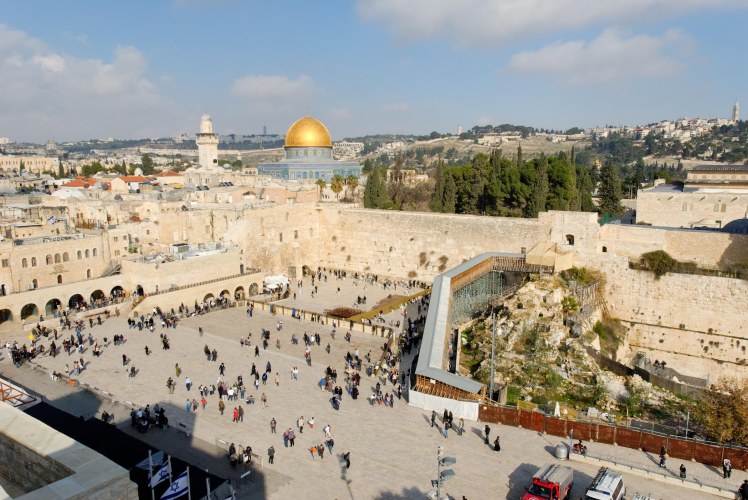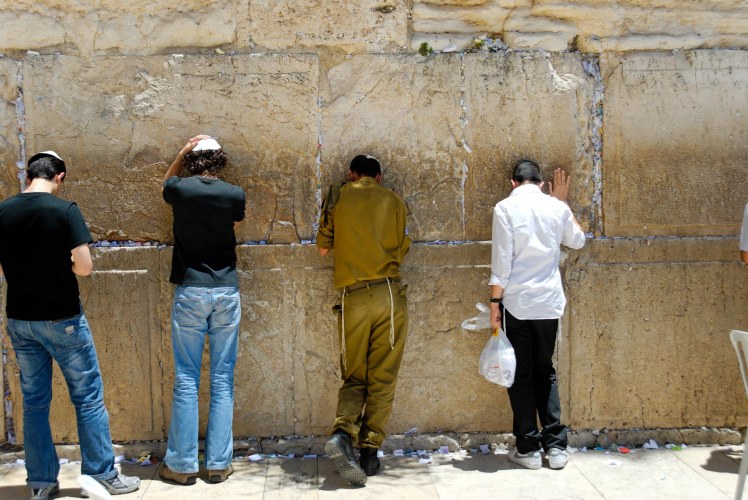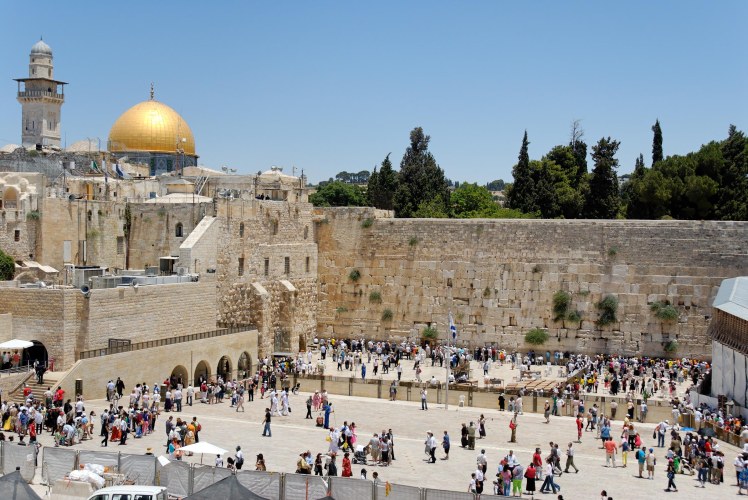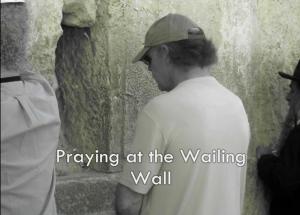
People tried to buy it, others dumped garbage at its foot, paratroopers shed tears on its stones, and men and women from every nation, walks of life and status tuck prayers into its cracks and crevices. It has withstood fire, earthquakes, war, politics and time, to stand immoveable and strong for those wanting to reach out and connect with God and history.

Three Names – One Site
The Western Wall, “Wailing Wall,” or Kotel is a Jewish religious site, revered through the ages and set aside for prayer and worship. Located in the Jewish Quarter of Old Jerusalem and constructed by Herod the Great, the wall is an 187 foot (57 m) exposed section of an ancient revetment along the western flank of the Temple Mount. However, more than just an archaeological wonder, simply put, for Jews worldwide it is the last standing remnant of their adored Temple.

Once Glorious Temples
Solomon’s Temple was built atop Mount Moriah in the 10th century BCE and destroyed by the Babylonians in 586 BCE. After the Jews returned from Babylonian exile, the Second Temple was completed in the same location in 516 BC. Before his death in 4 BC, Herod expanded the small quasi-natural plateau of Mount Moriah into the wide expanse of the Temple Mount visible today, reinforcing all four sides while extensively remodeling the 516 BC Temple. It is this remodeled Temple that the Romans destroyed, along with the entire city of Jerusalem, in 70 AD.

The Wall Replaces the Temple
During the middle ages, 500 – 1500 AD, the Jewish people, in the absence of their Temple, began resorting to devotions at the Western Wall. Several conquerors, including Sultan Suleiman of the Ottoman Empire were favorably disposed towards the Jewish people, not only allowing them access to the temple wall and removing the garbage that had built up in the area, but also building a fortress-like wall around Jerusalem, today’s Old City wall.

Wall For Sale
Over the centuries, homes were built on the land near the wall causing difficult public access to the wall and tensions between residents and those visiting for prayer increased. Several attempts to buy the area were made, most notably one in 1885 by Baron de Rothschild, but all fell through for various reasons, including disagreements between the Jews themselves.

Free Access Decreed
These difficulties continued through many wars, occupations and years of foreign control, including the post WWI British Mandate. In 1930 an international commission decreed, among other things, that the Jews had the right to “free access to the Western Wall for the purpose of devotions at all times.” Several stipulations limited what could be brought to the Wall, for instance blowing the Shofar at the Wall was not allowed and Muslims were forbidden to drive animals through the area.

19 Years of Silence Begun
During the 1948 Arab-Israeli war the old city including the Western Wall was captured by Jordan. In the ensuing 19 years, Jordan refused to allow any Jewish access to the wall. Only Jordanian solders and non-Israeli tourists could be found there. Finally in 1967, following Israel’s victory in the Six-Day War, the Western Wall came under total Israeli control.

19 Years of Silence Ended
Yitzchak Rabin, Prime Minister of Israel at the time, describes the scene as the soldiers reached the wall, “There was one moment in the Six-Day War which symbolized the great victory: that was the moment in which the first paratroopers – under Gur’s command – reached the stones of the Western Wall, feeling the emotion of the place; there never was, and never will be, another moment like it. Nobody staged that moment. Nobody planned it in advance. Nobody prepared it and nobody was prepared for it; it was as if Providence had directed the whole thing: the paratroopers weeping – loudly and in pain – over their comrades who had fallen along the way, the words of the Kaddish prayer heard by Western Wall’s stones after 19 years of silence, tears of mourning, shouts of joy, and the singing of “Hatikvah.”

Transformation of the Western Wall Plaza
Forty-eight hours after capturing the wall, the adjacent residences were demolished. That narrow pavement, which held only 12,000 people, was transformed into the enormous plaza we see today. Stretching from the Wall to the Jewish Quarter, it holds in excess of 400,000.

Western Wall Facts:
- 19 rows of stones below ground
- 24 rows of stones above ground
- 7 layers of huge Herodian stones from the second temple, easily distinguished by the etched border that is chiseled around each massive piece of limestone
- Quarried from the Cave of Zedkiah near the Damascus Gate
- Average size is 1 by 3 meters, although some beneath the surface weigh over 100 tons
- 4 layers of plain stone from the Roman or Byzantine era
- the remaining upper layers of small stones are from the Muslim era
- 7 layers of huge Herodian stones from the second temple, easily distinguished by the etched border that is chiseled around each massive piece of limestone
- The prayers tucked into crevices and cracks of the wall are periodically removed and taken to the Mount of Olives where they are prayed over, burned and then buried in a solemn Jewish ceremony.

Join us on our December 2017 tour. Bring your prayers and petitions to tuck into the Wall’s cracks and crevices, touch its stones…..there is nothing like it anywhere in the world.